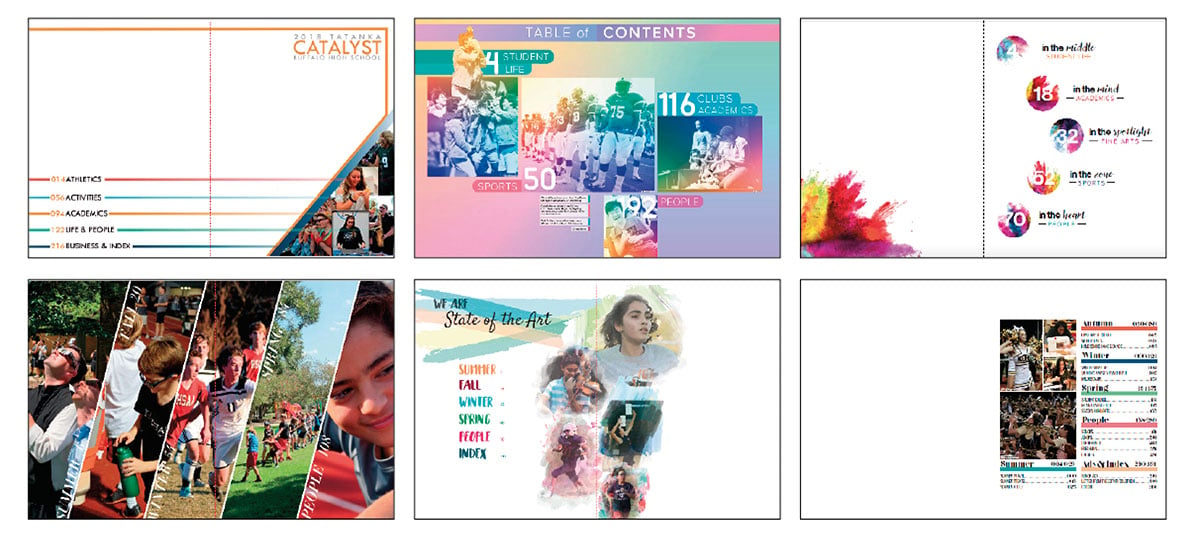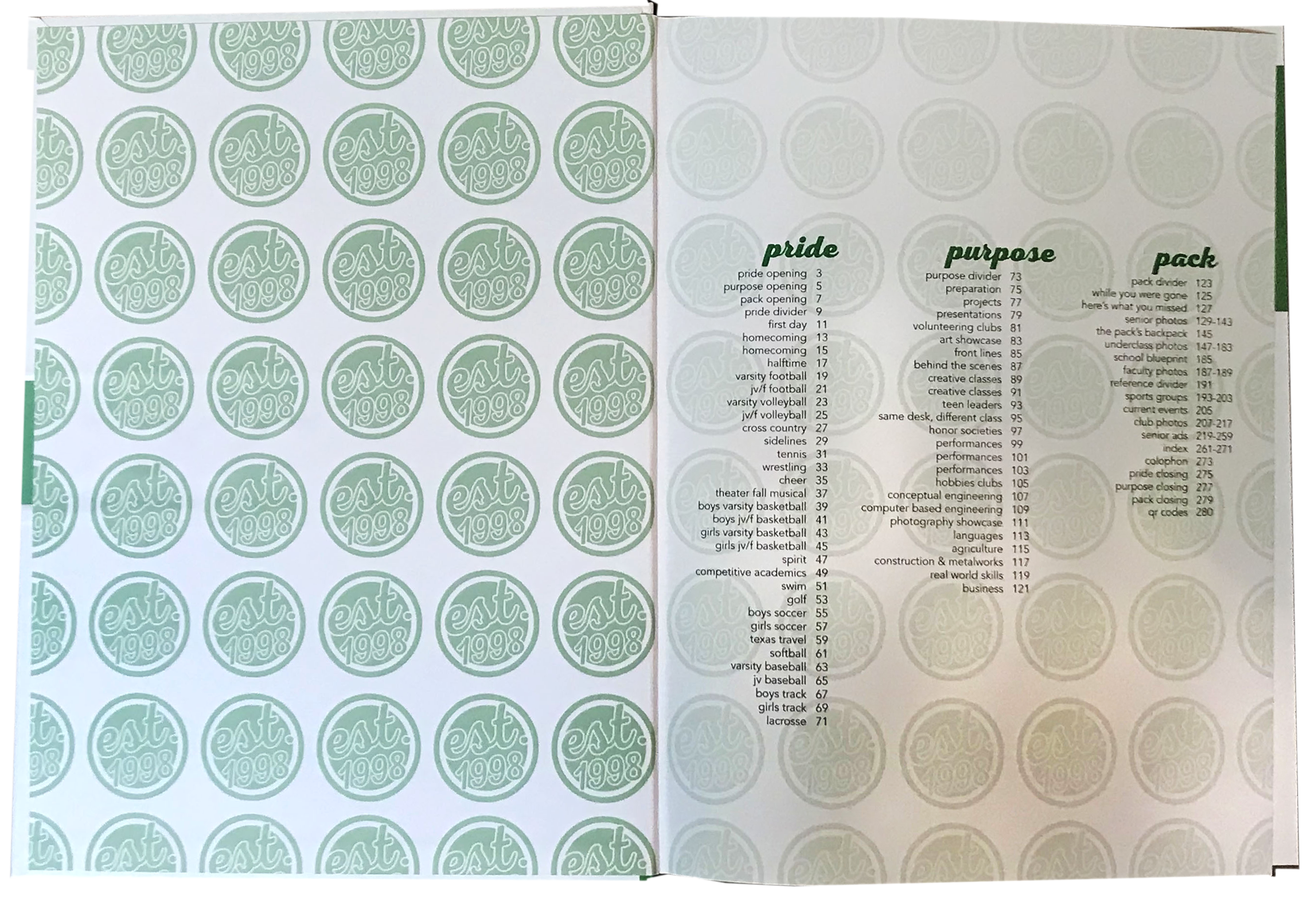The sections of a yearbook arrange the story of the year. But if you’ve always run the same sections, maybe it’s time for a change. Here are three formats for organizing the book.
Traditional
This is the time-tested way we’ve always organized yearbooks. A traditional structure splits up the book into sections for student life, academics, organizations, people and sports. This format is reliable and lends itself well to traditional coverage of school clubs, classes and events.
Chronological
A chronological format arranges the book in the order of time. This could be done weekly, monthly, by season or by semester. Classes, clubs, events and sports are covered as they happen, which often improves the level and type of coverage.
Another advantage of chronological planning is pages are submitted in order. This allows more signatures to be completed and lets the plant print at an earlier stage. The goal is to have 50 percent of your signatures printed by January, which is more likely if pages are turned in in order.

Traditional vs chronological organization: Buffalo High School, Bellaire High School and Lamar Middle School sorted their book traditionally while Cistercian Preparatory school, Canyon Vista Middle School and Klein Oak High School all used a chronological approach, separated sections by season.
Unconventional
A rarer type of organization, unconventional sections don’t conform to traditional or chronological planning. An unconventional approach is ideal for expanding theme development throughout the book.
For example, Cedar Park High School’s 2018 theme was “Pride, Purpose, Pack.” They divided the book into three sections, one for each of the words. Academic, club, sports and people coverage was slotted into the section it most identified with.

The unconventional route is an innovative way to develop the theme and reorganize your book. But if your theme lends itself to a different ladder organization please provide a detailed table of contents for readers.
So, what will you choose? Which format works best with your theme and book? Let the organization begin!

